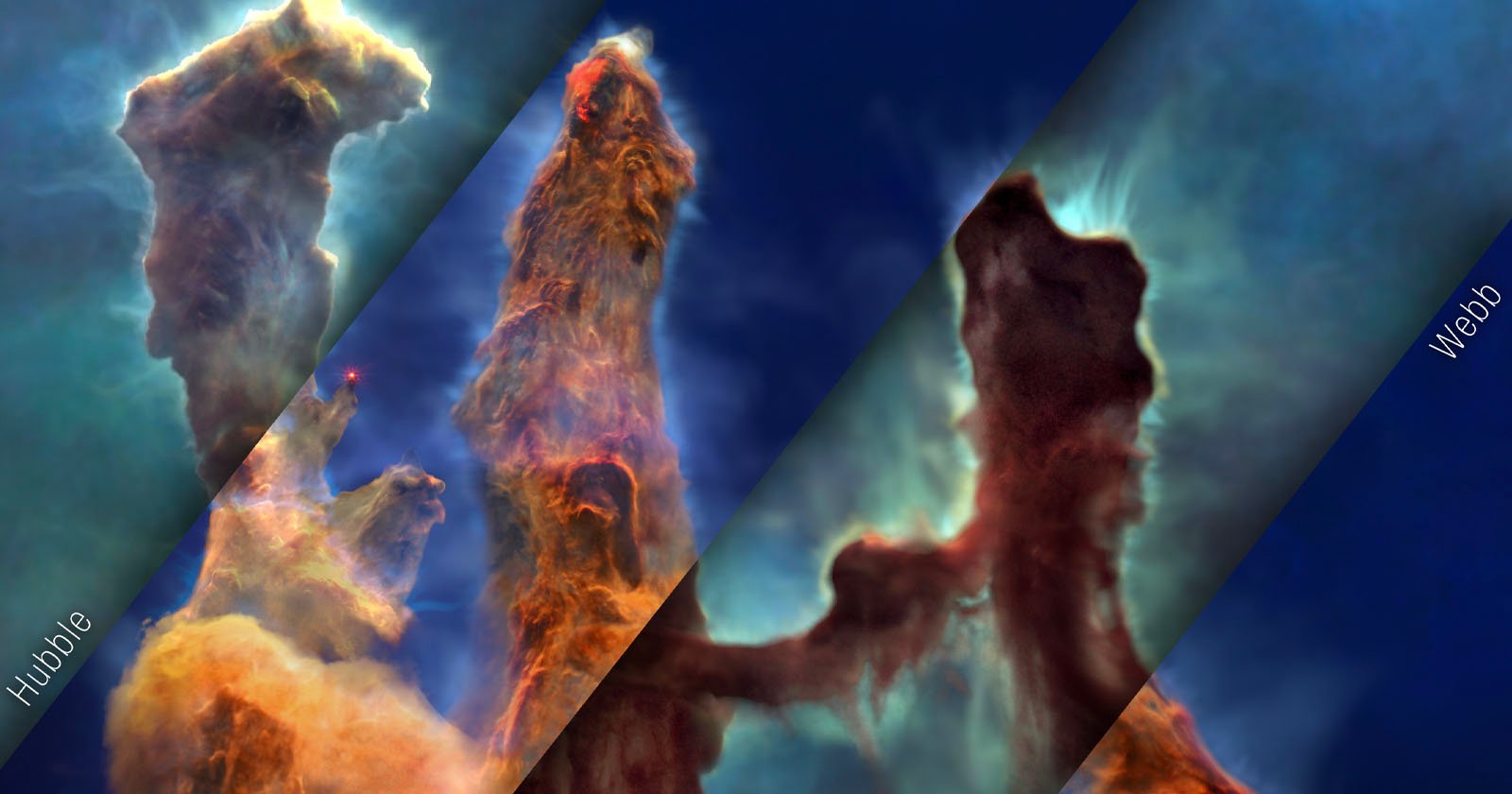
[ad_1]
![]()
NASA released an incredible new look at the Pillars of Creation, showing the celestial phenomenon in an entirely new way.
The Pillars of Creation encompass “three towers of gas and dust, standing light-years tall” that give “birth to new stars, buried within their dusty spires,” according to the Hubble Telescope’s website. Now, in a two-and-a-half-minute video released on YouTube by NASA, a new 3D visualization of the Pillars of Creation in the heart of the Eagle Nebula offers magnificent views that can also help better understand the subject. In fact, the new visual, as aesthetically captivating as it may be, is no mere guesswork.
“The movie takes visitors into the three-dimensional structures of the pillars,” the video’s description explains. “Rather than an artistic interpretation, the video is based on observational data from a science paper led by Anna McLeod, an associate professor at the University of Durham in the United Kingdom. McLeod also served as a scientific advisor on the movie project.”
In the video, viewers see 360-degree looks at the Pillars of Creation, both in visible and infrared lighting. This is possible by combining the data from both telescopes, which “work together to provide a more complex and holistic portrait of the pillars,” NASA said in a release.
![]()
“Hubble sees objects that glow in visible light, at thousands of degrees. Webb’s infrared vision, which is sensitive to cooler objects with temperatures of just hundreds of degrees, pierces through obscuring dust to see stars embedded in the pillars,’ the release continues.
“The 3D structures are approximations for how the pillars are lined up in space like a row of trees, based on observational data,” the description adds. “The goal is to give viewers an experiential view, so that they can better interpret the otherwise flat, two-dimensional images from telescopes.”
![]()
The Pillars of Creation were first made famous by NASA’s Hubble Space Telescope in 1995, as the space organization points out in its video, now the Hubble and the James Webb telescopes have created a new vision.
“When we combine observations from NASA’s space telescopes across different wavelengths of light, we broaden our understanding of the universe,” Mark Clampin, Astrophysics Division director at NASA Headquarters in Washington, explains. “The Pillars of Creation region continues to offer us new insights that hone our understanding of how stars form. Now, with this new visualization, everyone can experience this rich, captivating landscape in a new way.”
Image credits: Photographs courtesy of NASA.
[ad_2]